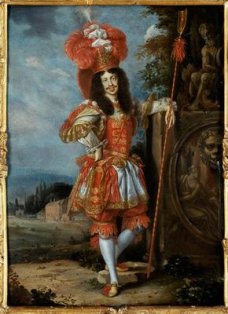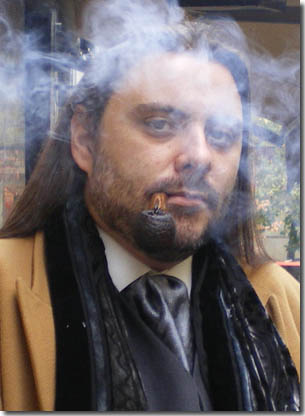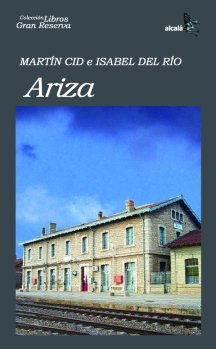Huelga de controladores aereos, ultimo articulo de Martin Cid
Más en http://www.martincid.com
December 7, 2010 Posted by martincid | Short Stories | controlador aereo, huelga, Martin Cid, opinion | Leave a comment
Jan Steen, pintor de tabernas
Ahora que la taberna como lugar de libertad ha terminado, ahora que ir a un bar comporta plegarse a más normas que en el trabajo, ahora que ya nadie puede cantar, gritar, bailar, beber, fumar…. en un garito. Os dejo lo que era una taberna de la época de Rembrandt: ¡da envidia!
December 5, 2010 Posted by martincid | Short Stories | beber, fumar, Jan Steen, Martin Cid, ocio, taberna | Leave a comment
Leopoldo I de Habsburgo con traje de teatro.
Este sí que es un retrato de la “otra Europa”. Cuando estuve en Praga no dejé de apreciar el austero modo de vestir del señor Leopoldo I, retratado por todos los museos y retratado siempre con un atuendo sencillo.
Debía ser simpático el tal Leopoldo que, por cierto, se casó con la infanta Margarita, protagonista de las Meninas. Tuvo con ella 4 hijos y, después de disfrazarse juntos en bailes y teatros, la chica murió de sobreparto.
El óleo se pintó en 1667 por Jan Thomas.
Se encuentra en el Kunsthistorische Museum, Viena
Más sobre Martín Cid: http://www.martincid.com
November 30, 2010 Posted by martincid | Short Stories | emperador, infanta Margarita, Leopoldo I, Martin Cid | Leave a comment
Muerte del general Riego
por Martín Cid http://www.martincid.com
Muerte del general Rafael de Riego
: ejecución en la horca -ocurrida el día 7 de noviembre de 1823-, tras ser arrastrado en una espuerta por las calles de Madrid hasta la Plaza de la Cebada. El cadáver de Riego debía ser decapitado y descuartizado, y enviada la cabeza a la localidad gaditana de Las Cabezas de San Juan, donde el entonces comandante Riego había proclamado la Constitución del año 12 casi cuatro años atrás, el 1 de enero de 1820, ante su batallón formado en cuadro y que debía haber viajado a América.
November 11, 2010 Posted by martincid | Short Stories | Fernando VII, general Riego, Martin Cid, muerte | 1 Comment
Isabel del Río y Martín Cid y Ariza
November 6, 2010 Posted by martincid | Short Stories | Ariza, editorial Alcala, foto, Isabel del Rio, Martin Cid, novela | Leave a comment
James Ensor, always fantastic.
by Martín Cid
Our body is made of flesh and blood built on a framework of bones. Without our bones, we could not stand up or move about.
Two Europeans eating the same bonne: discusting, yes, I know but a portrait frome another Europe.
I like James Ensor.
Now, an exhibition about James Ensor will be in Madrid. See more:
October 10, 2010 Posted by martincid | Short Stories | Leave a comment
About Clarin, a Spanish writer (by Martin Cid)
“Spain is not a country of novelists”. In recent times, it is a strong sentence which could keep some truth if we forgot that not only would be Tolstoi but Clarin, a Spanish author, who would join the 19th century literary achievements, establishing the next century fiction basis.
Clarin was born in Zamora in 1852 but he lived in Oviedo many years. Here, in this wet town, surrounded by mountains, near Bay of Biscay, he wrote his important novel: “The Regenta”. It tells Ana Ozores’ life, a beautiful woman full of feelings and passions, trapped in Vetusta’s hypocritical and conservative society. Vetusta is Oviedo’s literary name and since I am from there, I have breathed from the very beginning the same air as Clarin did and I remember my childhood meeting similar priests, civil servants, pensioners and military men that the book describes: people who walked along ancient streets, far from modern times, near from extinguished memories.
In fact, the whole Vetusta smells of Clarin because, in fact, Oviedo was reborn from this great writer’s pen. From every balcony, Ana Ozores is still calling for freedom behind iron railings. In the cathedral, Fermin de Pas, a bitter priest, is trying to win her heart. In the club, Alvaro Mesia is cheating an old, impotent, dizzy husband.
The novel is Vetusta but also Spain skeleton as well as London, Paris or a broken Berlin. In Vetusta, the old Europe is dialoguing with the new one and Ana Ozores is every woman’s reflection. She is a mirror, nothing more… noting less. “The Regenta”, however to be called with the dreadful name of regionalist, is an international story, a landmark in fiction development. It is an innovative island in the middle of a traditional country; it is a new world which sings old lilts.
 Clarin sets up from realism (he had constantly correspondence with Galdos, the writer of Madrid’ life and Spanish contemporary history). Galdos goes and comes quickly among a big amount of characters, able to solve adventures and become heroes. Clarin reduces the frantic sequence of happenings to analyze deeply each one of them. He writes slowly and smartly… he arrives at the psychological novel.
Clarin sets up from realism (he had constantly correspondence with Galdos, the writer of Madrid’ life and Spanish contemporary history). Galdos goes and comes quickly among a big amount of characters, able to solve adventures and become heroes. Clarin reduces the frantic sequence of happenings to analyze deeply each one of them. He writes slowly and smartly… he arrives at the psychological novel.
This novel goes without teller to be conscious of itself -the point of view-. It claims for its own voice, ethic and atheist… wonderful. From the highness, flying over Vetusta, a vulture introduces us Ana. She is our heroine, muse and cruel goddess; she is the Babylonian myth, the three White goddess’ manifestations fighting secretly and constantly. Nevertheless, our world is different and now she is not a divine creature but a sensitive woman who rememberes old readings, dreams and journeys on a boat. Pages pass as well as years and we see her face at the foreground: “The Regenta”. The nickname comes from his husband’s job, a high authority in the deep town, an old tired man called Victor Quintanar.
Ana is a typical woman from last nineties but she is also a goddess willing to face her fate, beyond Fermin de Pas –the bitter priest- and Alvaro Mesia –a new Don Juan-. She goes far from herself, the same as Madame Bovary did. Flaubert wrote lyrics to a goddess who feelt lost; Clarin, the professor, wakes us up with sharp sentences.
Vetusta is Don Quijote and El Buscon but is Manhattan Transfer too. Clarin mixes Henry James’ brilliant dialogues with Zola’s descriptions. He is a Zaratustra at the top of a mountain, looking proud at a Spain full of knights who fight giant mills, full of kidnapped ladies, poets and dragons. He is the vulture, able to discover new lands and futures.
We are there, walking along the streets of whatever town. We turn a corner and meet the old colonel, the parish and a deformed slave. The vulture smiles. Quasimodo and Esmeralda are following Victor Hugo’s steps. Rabelais is visiting Spain… old dreams always return. Maybe we are beside a woman -married with a civil servant-; perhaps we are a seducer or a priest… but it is sure that we have a place among these old, modern pages.
Leopoldo Alas Clarin. April 25th 1852- June 13th 1901.
MARTIN CID
http://www.martincid.com/english/index.php
September 12, 2010 Posted by martincid | Short Stories | Clarin, literature, Martin Cid, Regenta, Spanish writer | Leave a comment
About Jorge Luis Borges, by Martín Cid
In a small room, a book was opened by a mystic man… all that happened in an eternal library.
He was one of the last Borges’ characters, Jaromir Hladik, who -in the point of being shot- stopped a bullet to correct his imaginary literary work.
“Kabala” is a way of studying reality: “The Word” and its 22 magical symbols are its tools.
The Argentine writer was precisely one of the few authors who could stop the literary time, just to correct his epitaph… on a false grave:
Jorge Francisco Isidoro Luis Borges (Buenos Aires, 24th of August, 1899 – Genève, 14th of June, 1986.
The Kabalistic Tree has 10 sefirot and 22 ways and 4 worlds.
For Borges, “Time” is words, only words which speak to the silent centuries.
For kabala, “Time” is nothing but words which speak to faceless gods.
22 + point + comma + space = 25 orthographic symbols in The Library of Babel.
And the sky which looks at the Creation and sees everything and speaks every language was called Mathematics by Pythagoras.
And the place, where every language was confused, was called Babel by God.
And the librarian of hexagonal dead cold rooms, which contends exactly twenty five raised to one million three hundred thousand and twelve books of twenty five symbols, was called Jaromir Hladík by Borges.
Every Hebrew letter has its corresponding number.
“Secret geometry” is the branch of kabala which looks into relationships among words of a similar numeric value.
And someone said: every room shall be a hexagon and every hexagon shall contend 640 books:
6 + 4 + 0 = 10 = 1. According to cabalists, One is God’s number.
Rabbis say that God looked at the Torah before creating the world.
Because nothing is by chance in the book which is the father of other books.
Because nothing is by chance in the book which contends all of the words.
Because every room has 640 books.
Date of Borges’ birth: 24/8/ 1899. 2 + 4 + 8 + 1 + 8 + 9 +9 = 41
Date of Borges’ death: 14/6/1986. 1 + 4 + 6 + 1 + 9 + 8 + 6 = 35
41 + 35 = 76 = 7+6=13
“God is one” is summarized repeating the Word ejat “one” since its geometric value is: 1 + 8 + 4 = 13
2×13 = 26 = IHVH
The Library of Babel was a short story by Borges, written in 1941.
1 + 9 + 4 + 1 = 13
Maybe the tired echo of those hexagonal walls will return “The Word” and the order to the mystic man… or maybe it will not.
The mystic man looked at his shadow on the wall which summed 13.
In his prison of words and numbers, the mystic man remembered his name: Jaromir Hladík.
Now, always, he remembered a bullet which went through his chest and he remembered being playing in an imaginary library and being reading and being alive and finally, seeing the snow falling on his corpse.
August 22, 2010 Posted by martincid | Short Stories | Jaromir Hladik, Jorge Luis Borges, kabbala, Martin Cid | Leave a comment
“The Mirror” by Martín Cid
Smiling, he takes the mirror, takes again and leave the town, as I can remember, as he can remember. Maybe.
He takes a look for first time, while the light was so cleany, foggy and crowd…, the town was waiting, for him, for me, all of us.
I can remember, when I was just a child, even a man. I was near river Liffey, near my mother and his husband, not my father, not for more. The house was a XIX typical house, rooms and corridors, that foggy light crossing the steps, wathing us, wathcing me.
-He did it –my mother said, I couldn´t understand it, maybe I wouldn´t understand it at all, never.
I ran downstairs to meet my sister. No, she was´t there, she won´t be there –here- never again. Not for more, not for me. He did it, said again, he did it. I could find my steps, while I got my future, while I was living, maybe into my broken soul.
-Give me your hand
She was –ever- just a girl, my sister. We came to Ireland. She was eleven years old, blue eyed, beyond me. He was in the room next door, wathing, always watching, worth, Liffey sang, just three words: He did it, lilt, silent, strongly, brief… music and holy water bathing his eyes, her smooth skin.
I opened my eyes, while she was still life, while her eyes was still open. I wathched myself, on the mirror, on my own relfection.
He did t, you did it.
The mirror always speaks with silent words, nearly, hearing the water. I meet it, I meet me. I stick her head of the water, while I was still life, while the mirror, still, got back my soul, my reflection, still over the water, smiling.
Maybe he raise it.
Read more: http://www.martincid.com
August 19, 2010 Posted by martincid | Short Stories | magic, Martin Cid, shadow | Leave a comment
My bio: Martin Cid
I am a writer. Novels: Ariza, A Century of Ashes and Eminescu’s 7 Sins.
Director of the magazine Yareah (http://www.yareah.com)
August 6, 2010 Posted by martincid | Uncategorized | Martin Cid | Leave a comment
About: Martín Cid
My name is Martin Cid, I am a writer.
“Portraits from Another Europe” is my new literary blog. I will offer rare pictures from life, from Spain.
Mi nombre es Martín Cid, soy escritor.
“Retratos desde la otra Europa” es mi nuevo blog literario. Mi web es http://www.martincid.com
Un Siglo de Cenizas de Martín Cid

Un Siglo de Cenizas de Martín Cid
Los 7 Pecados de Eminescu de Martín Cid
Ariza, novela de Martín Cid e Isabel del Río
 Martín Cid
Martín Cid Yareah Madrid
Yareah Madrid- An error has occurred; the feed is probably down. Try again later.
 Yareah magazine
Yareah magazine- An error has occurred; the feed is probably down. Try again later.
 La Vieja Sirena
La Vieja Sirena- An error has occurred; the feed is probably down. Try again later.
 Mentiras del tabaco
Mentiras del tabaco- Isabel del Rio y sus amigas
- El escritor Martín Cid
- Dos fumadores: Martín Cid y Arturo Pérez Reverte.
- Lauren Bacall y el mito de fumar
- El Ché Guevara también fumaba.
- El escritor Martín Cid en el café Libertad 8 de Madrid
- Elogio del Tabaco de Juan Manuel Martínez Valdueza
- «Yo fumo, Yo acuso» por el escritor Martín Cid, fumador
- Hello world!
 Amigos de Ariza
Amigos de Ariza- New Orleans and Nelson Mandela. Treme TV series
- The Truth and Nothing But
- Likes and dislikes of NBA players. Yao Ming, LeBron James, Michael Jordan….
- The End of the World on Yareah Magazine
- The End of the World on Yareah Magazine
- Cities of Love. Pocahontas or Juliet cities
- Celebrities and Christmas on Yareah Magazine
- Top sentences about New York City. Groucho Marx, Hillary Clinton, Lady Gaga…
- Eminem is viral on YouTube. Latest News
- Bill Gates vs Mark Zuckerberg. Different point of views about Internet
 Fotos
Fotos- Firmas en el Rastrillo benéfico Nuevo Futuro.
- ¿Dónde trabaja un escritor?
- Martín Cid
- Catalina Seco y Juan Manuel M.Valdueza (ed. akrón) con Isabel del Río
- Mitos Celtas y Druídicos: el alfabeto de los árboles, por Isabel del Río
- Andábata, última novela de Olga Bernad
- Artículo de Arte de Mario Rodríguez Guerras en Yareah magazine
- Los que no fuman también mueren por la escritora Isabel del Río
- Bisuterapia
- Presentación libro de editorial Akrón: Wilde en España de Sergio Constán
 El Rincón de Pericles
El Rincón de Pericles- A Century of Ashes by Martin Cid
- Los nazis y sus métodos de propaganda
- Viaje a Oriente, de Martín Cid
- La asignatura de Historia del Arte en España
- Revista cultural busca colaboraciones de arte y literatura
- Yareah magazine publica "Nueve meses en la Luna"
- Ares - Marte: Dios de la Guerra, Dios de los Hombres en Yareah magazine
- RECOMENDACION DE LIBROS MILITARES
- Calígula, emperador de Roma en Yareah magazine
- Atila, rey de los Hunos en Yareah magazine
 Papyrus
Papyrus- A last papyrus.
- Martín Cid, autor de Un Siglo de Cenizas
- Frase famosa de Martín Cid: El mejor de los papiros
- Video sobre mujeres artistas de la Edad Media, de Isabel del Río
- Video I- Las Chicas del Oleo, pintoras y escultoras anteriores a 1789, de Isabel del Río
- Video II- Las Chicas del Oleo, dedicado a Sofonisba Anguissola- por Isabel del Río
- Heros and Superheros on Yareah magazine/January 2010
- Ariza by Martín Cid and Isabel del Río
- Emile Zola on Yareah magazine/11
- Papyrus about Avant-Garde movements on Yareah magazine
 Las Chicas del Oleo
Las Chicas del Oleo- American Visionary Art. Latest News and Events
- Gothic Stories on Yareah. Ten Masks of Evil
- Funny. kierkegaard and the Contortionist by Word Rummager
- This Summer visit Ostia Antica. Info on Yareah
- Pop. After School and Park Kahi on Yareah Magazine
- Nudism. Vera in the Guinness Book. Skinny Dip
- Did Picasso steal The Mona Lisa? Read on Yareah Magazine
- Quotes by Marilyn Monroe on Yareah Magazine
- Quotes by Martha Washington on Yareah Magazine
- Sex and Love in Saint John Night (June 23)
 Opiniones
Opiniones- An error has occurred; the feed is probably down. Try again later.
 Editorial Akron
Editorial Akron- An error has occurred; the feed is probably down. Try again later.
-
Archives
- December 2010 (2)
- November 2010 (3)
- October 2010 (1)
- September 2010 (1)
- August 2010 (4)
- March 2010 (3)
- January 2010 (1)
- June 2007 (2)
-
Categories
-
RSS
Entries RSS
Comments RSS










